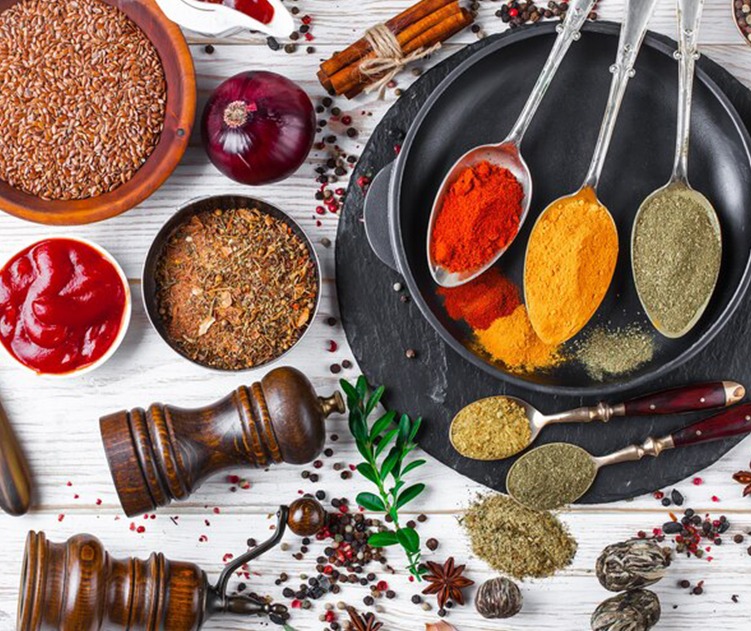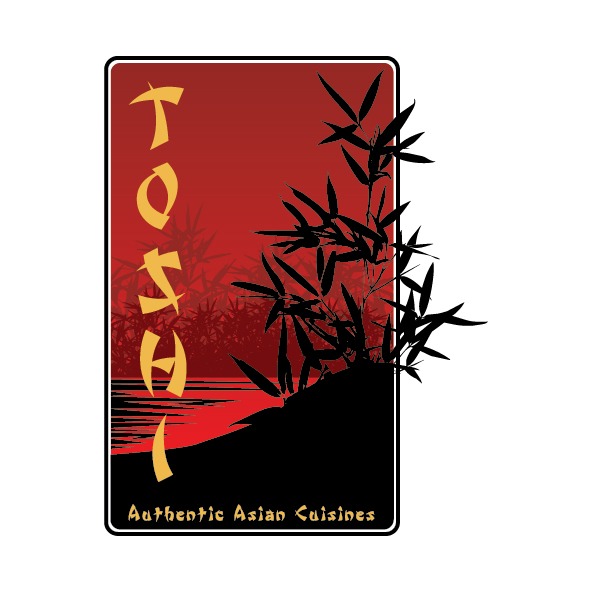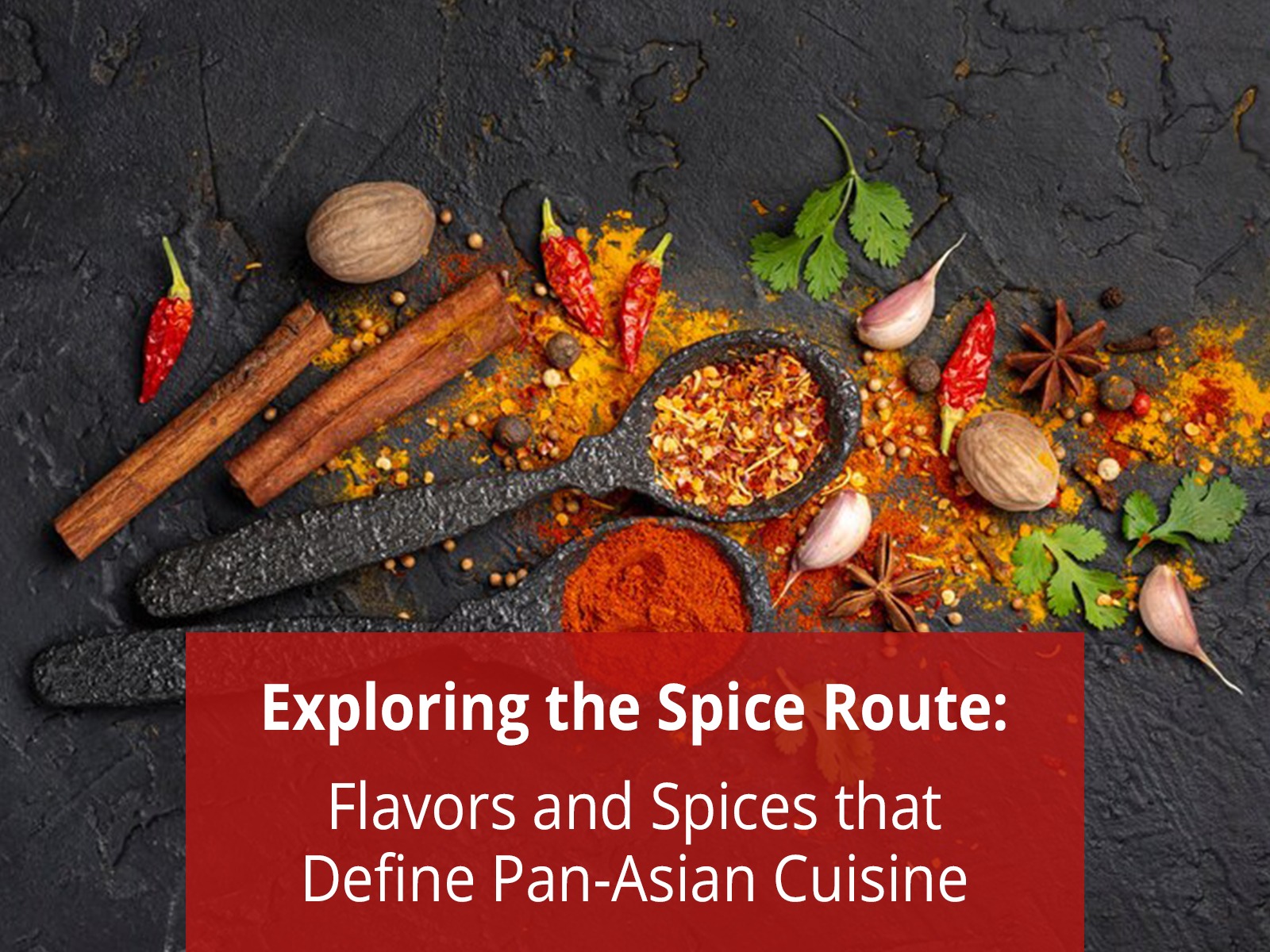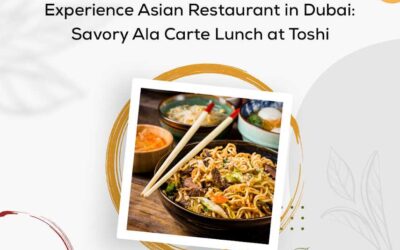The culinary traditions of Pan-Asian cuisine are a tapestry woven with the vibrant flavours of spices, each thread representing a different culture and a unique culinary heritage. At the heart of this culinary journey lies the Spice Route, an ancient network of trade routes that connected the East and the West. The Spice Route was not merely a conduit for the exchange of goods but also a bridge for cultural interactions, shaping the cuisines of Pan-Asian countries in profound ways.
Spice Route Origins: A Journey through History
The origins of the Spice Route can be traced back thousands of years, with its heyday during the Middle Ages. Traversing through regions such as India, Southeast Asia, China, and the Middle East, this trade route facilitated the exchange of spices, and precious commodities that were highly sought after for their exotic flavours and medicinal properties.
The trade along the Spice Route introduced a myriad of spices to Pan-Asian cuisines. For instance, Indian cuisine embraced the aromatic warmth of spices like cardamom, turmeric, and cumin, while Thai cuisine incorporated the zesty notes of lemongrass and galangal. In China, star anise and Szechuan peppercorns brought a numbing heat to dishes, while Japanese cuisine embraced the delicate complexity of spices like shichimi togarashi.
Spice Profiles: Unveiling the Aromas and Tastes
Ginger: Known for its distinct zing and warmth, ginger adds a spicy kick to dishes while providing numerous health benefits. It is a staple in Chinese stir-fries, Thai curries, and Japanese pickles.
Turmeric: With its vibrant yellow hue and earthy flavour, turmeric is a key ingredient in Indian curries and Thai dishes. It is also valued for its anti-inflammatory properties.
Star Anise: This star-shaped spice imparts a licorice-like flavour to dishes and is a prominent component of Chinese five-spice blends. It is often used in braised meats and aromatic broths.
Cardamom: Renowned for its aromatic and slightly sweet taste, cardamom is a prized spice in Indian and Middle Eastern cuisines. It is used in both savoury and sweet preparations, such as curries and desserts.
Lemongrass: Offering a refreshing citrusy aroma, lemongrass is prevalent in Southeast Asian cuisines, particularly Thai and Vietnamese. It is used in curries, soups, and marinades, lending a unique brightness to dishes.
Regional Influences: Spice Diversity across Pan-Asian Cuisine
Pan-Asian cuisine showcases the diversity of spices across different regions, each leaving its distinct mark on local dishes.
Indian curries: Known for their complex spice blends, Indian curries feature a combination of spices like cumin, coriander, cinnamon, and cloves. The interplay of these spices creates rich and aromatic gravies.
Thai Tom Yum soup: The iconic Thai soup combines lemongrass, galangal, kaffir lime leaves, and chilli to create a harmonious balance of spicy, sour, and herbal flavours.
Chinese five-spice blends: Consisting of star anise, cloves, cinnamon, Szechuan peppercorns, and fennel seeds, this blend is used in various Chinese dishes, such as roast meats, stir-fries, and braises.
Japanese shichimi togarashi: A blend of seven spices, including chilli flakes, sesame seeds, and dried orange peel, shichimi togarashi adds a fiery and aromatic touch to dishes like ramen and grilled meats.
Fusion of Flavors: Modern Interpretations and Culinary Innovations
In recent years, Pan-Asian cuisine has evolved beyond traditional boundaries, embracing fusion and innovation. Chefs have been blending traditional flavours with modern techniques, resulting in exciting new dishes.
One such example is the fusion of Japanese and Peruvian cuisines, known as Nikkei cuisine. This unique blend combines Japanese precision and Peruvian vibrancy, creating dishes like ceviche with a touch of soy and wasabi.

Pan-Asian Cuisine
Spice Tips and Techniques: Bringing Pan-Asian Flavors to Your Kitchen
Toasting and Grinding Spices: Enhance the flavours of your spices by toasting them lightly in a dry pan before grinding. This process releases their essential oils and intensifies their aroma. Invest in a spice grinder or use a mortar and pestle to grind your spices fresh for each dish, ensuring maximum flavour.
Incorporating Spices in Cooking Techniques: Besides using spices directly in dishes, explore various cooking techniques that can infuse your meals with Pan-Asian flavours. For example, try tempering your oil with whole spices like mustard seeds, cumin seeds, or fenugreek seeds before adding other ingredients. This process adds a subtle, aromatic layer to your dishes.
Marinating with Spices: Marinating proteins and vegetables with spice blends can impart deep flavours. Create a marinade by combining spices, herbs, yoghurt, or citrus juices, and let your ingredients soak in the flavours for a few hours or overnight. This technique works particularly well for grilling, baking, or pan-searing dishes.
Stir-Frying with Aromatics: In stir-fried dishes, start by sautéing aromatic ingredients like ginger, garlic, and onions in hot oil before adding other vegetables, meats, or seafood. These aromatics provide a fragrant base and enhance the overall flavour profile of your dish.
Experimenting with Pan-Asian Sauces: Pan-Asian cuisine boasts a wide array of flavorful sauces like soy sauce, fish sauce, hoisin sauce, and oyster sauce. Incorporate these sauces into your cooking to add depth and complexity to your dishes. Mix and match different sauces to create your own signature sauces or glazes.
Adding Fresh Herbs and Citrus: Fresh herbs like cilantro, Thai basil, mint, and lime leaves are essential ingredients in Pan-Asian cuisine. Sprinkle chopped herbs over finished dishes or incorporate them into sauces and dressings to add brightness and freshness. Similarly, citrus fruits like lime, lemon, and kaffir lime are often used to provide a tangy, zesty element to dishes.
Tasting and Adjusting: While following recipes is a great starting point, don’t be afraid to taste your dishes as you cook and make adjustments accordingly. Add more spice if needed, balance flavours with a touch of sweetness or acidity, and trust your palate to create dishes that suit your personal preferences.
Spice Pairings: Unleashing the Magic in Pan-Asian Cuisine
Ginger and garlic: The dynamic duo of ginger and garlic forms the foundation of many Pan-Asian dishes, infusing them with a fragrant and savoury kick.
Turmeric and coconut milk: The combination of turmeric’s earthiness and the creamy richness of coconut milk creates a harmonious balance in curries and soups.
Star anise and cinnamon: These warm and aromatic spices work together to enhance the flavours of Chinese braised dishes and desserts.
Conclusion: Embracing the Spice Route
Embarking on a culinary journey through the Spice Route allows us to appreciate the rich flavours and cultural diversity of Pan-Asian cuisine. The fusion of spices and techniques across the region has given birth to a myriad of delectable dishes, inviting us to explore and embrace this vibrant tapestry of flavours.




